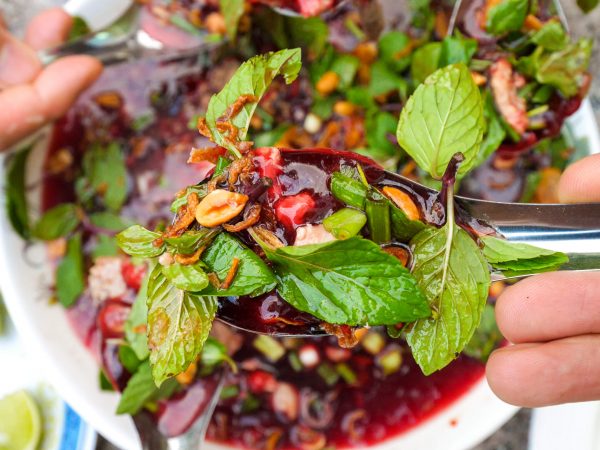
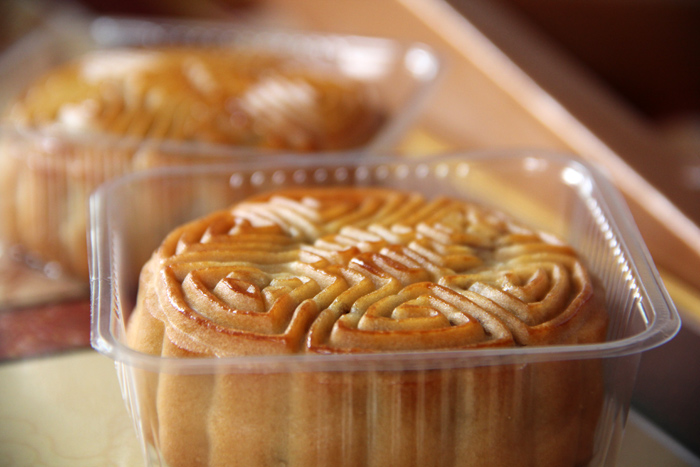
Today marks the start of the Chinese Mid-Autumn festival (the actual full moon is on the 12th of September, 2011).
This important Chinese holiday falls annually sometime in September or October when the moon is at its biggest and brightest. Traditional baked Chinese pastries, known as mooncakes, all of a sudden become the buzz and are sold everywhere.
Taking part in various festivals and sampling traditional treats is one of the greatest things about traveling. Just a few months ago I had had the privilege of devouring all forms of pork at Thailand’s Songkran festival, and now I was about to indulge in symbolic Chinese mooncakes!
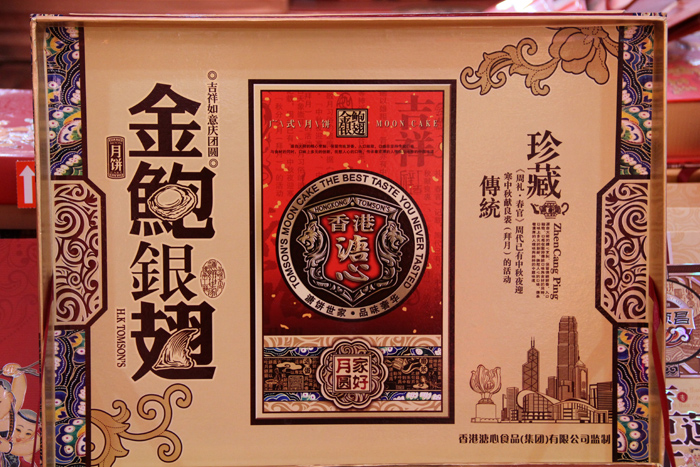
This year for the moon festival I just happen to be in China for the first time in my life.
Being half Chinese American, I have sampled a few mooncakes throughout my growing up years, but I always just thought they were random pastries, not having to do with anything special.
This time, I was able to learn a little about the mooncakes themselves and taste a few different kinds.
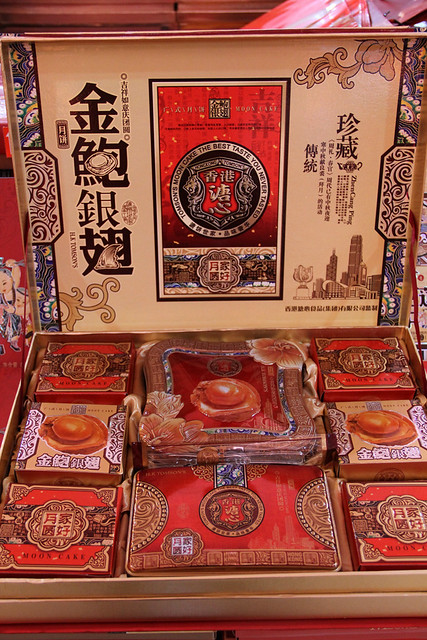
What is a Chinese Mooncake?
A mooncake is a traditional Chinese pasty cake that is given as a gift and eaten during the Mid-Autumn Festival (also known as the Moon Festival).
Get exclusive updates
Enter your email and I’ll send you the best travel food content.
The interesting part is that the cakes are not really that special, but the elaborate packaging is what elevates their prestige. The fancier the package, the more expensive, and more highly impressive it is.
Mooncakes are offered as gifts to friends, relatives, and especially business co-workers.
If you give a very fancy packaged mooncake to a person you hold with high regards, you’ll most likely gain some extra respect and consideration.
In the end, it’s not really about the mooncake itself, but about the fancy wrappers and box (almost like a suitcase) that it comes in.
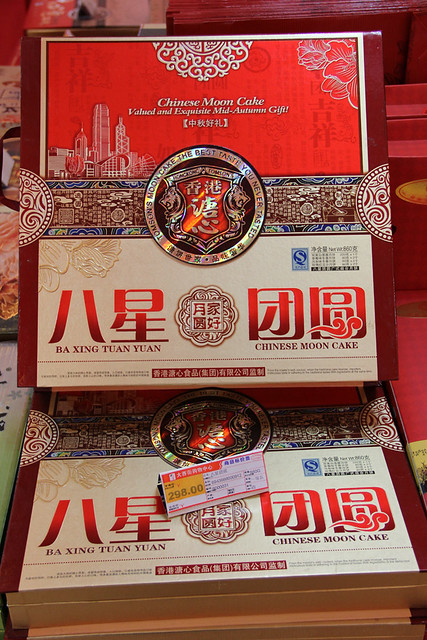
This fancy golden box of mooncakes was going for 298 CNY ($46.66) – just for a few simply made cakes!
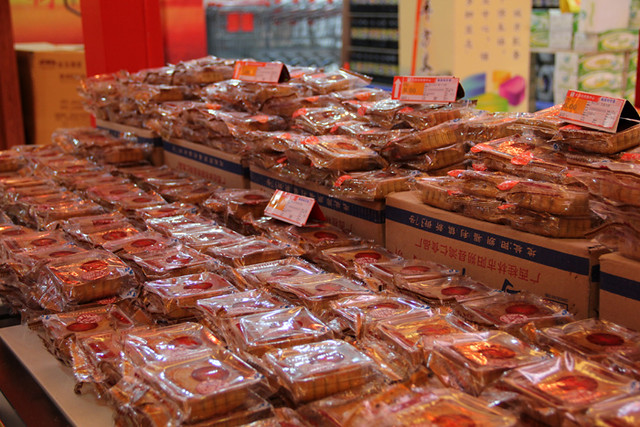
For the cheapos, there were little individually plastic wrapped mooncakes that were priced at 4 – 6 CNY ($0.63 – $0.94).
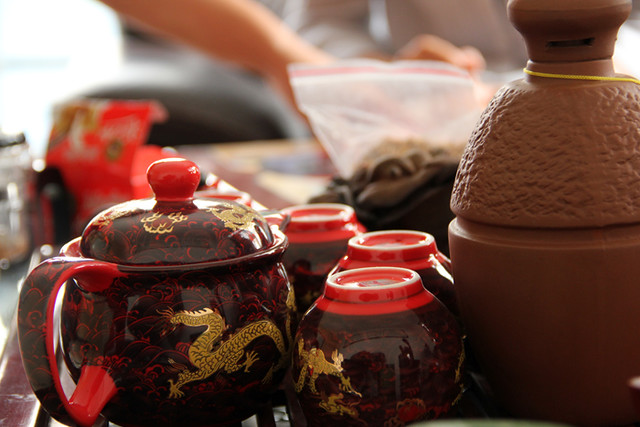
Mooncakes are dense, rich and almost sticky, like if you were to eat a spoon full of peanut butter. It sort of gave my mouth that weird adhesive feeling like sampling sago palm starch in Brunei for the first time.
To combat the dry stickiness, it’s necessary to drink a few cups of hot Chinese tea along with nibbles of the cake. It also helps in the digestion process.
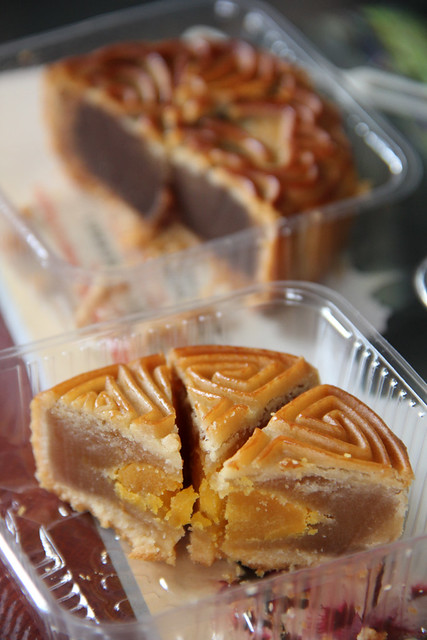
Where Should a Mooncake be Eaten?
Traditionally, moonckes should be eaten outdoors, under a tree while watching the full moon and sipping on tea.
The one above is filled with a salted duck egg, one of the most popular fillings. The egg represents the bright full moon.
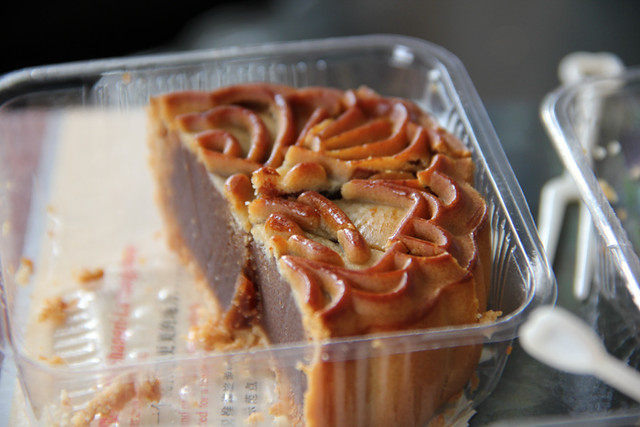
This cake filled with sweet beans is reminiscent of a kind of fig newton bar. The filling was not overly sweet, but had a thick pasty texture.
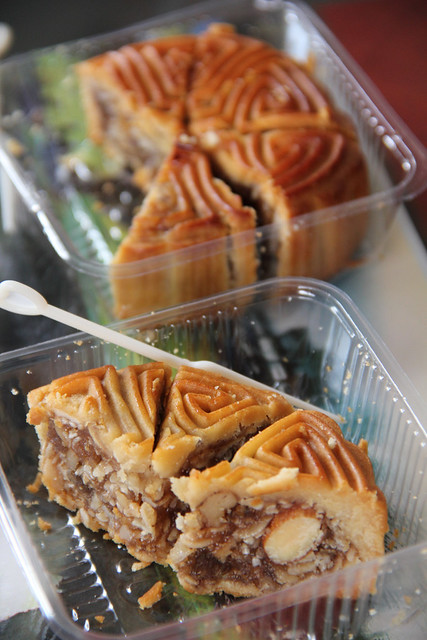
My favorite mooncake of the bunch was this 5 kernel nut filled cake. It retained its texture from the nuts but was still as dense and solid as the other cakes.

Sometimes pork of duck are added to a mooncake to make it richer and more flavorful. This mooncake was loaded with sweet paste and had a bizarre porky fragrance to it. It wasn’t bad, but not what I would call my favorite.
Do Chinese Like to Eat Mooncakes?
Many Chinese don’t even really like mooncakes, and some avoid them due to their extremely high concentration of calories. For myself, I’m not a huge mooncake fan – they just a bit too dense and heavy for my taste. On the other hand, one or two bites with a hot cup of tea is something I could do once a year for the Mid-Autumn festival!
Have you ever eaten Chinese mooncake?
Get exclusive updates
Enter your email and I'll send you the best travel food content.



